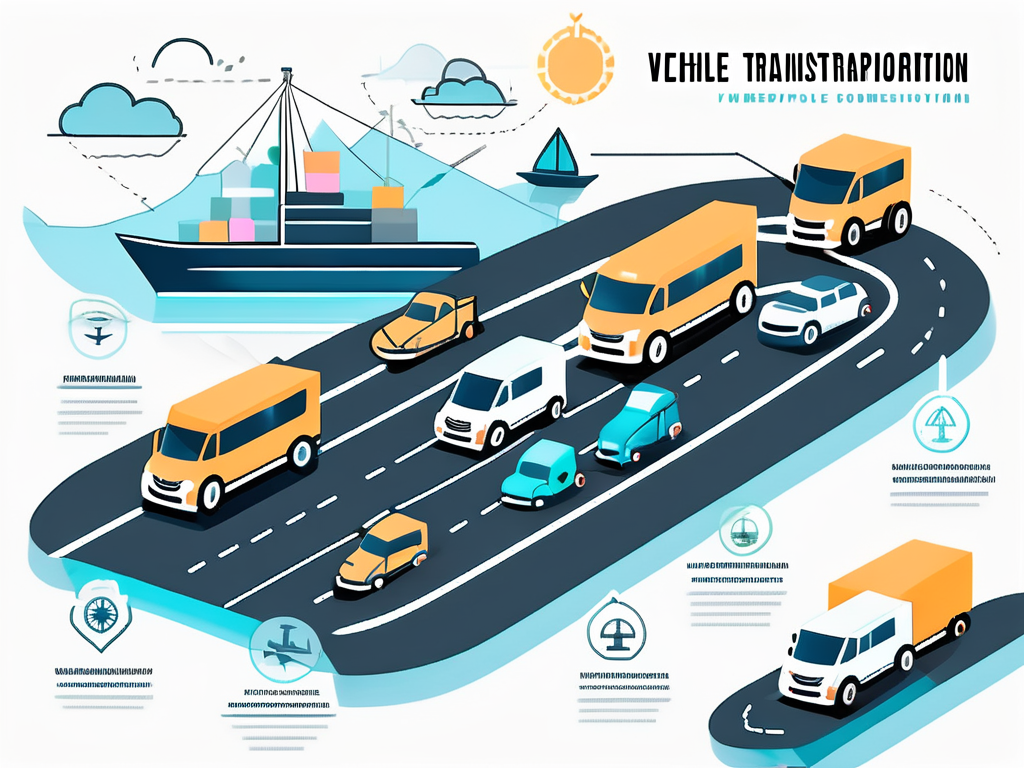Transporting a vehicle internationally can be a daunting task. The logistics involved, the cost implications, and the legal requirements can make the process seem overwhelming. However, with the right information and preparation, you can ensure that your vehicle is transported safely and efficiently.
Understanding the Basics of Vehicle Transportation
Before diving into the specifics, it’s essential to understand the fundamental aspects of international vehicle transportation. This knowledge will help you make informed decisions and avoid common pitfalls along the way. With the global marketplace expanding, more individuals and businesses are looking to transport vehicles across borders, making it crucial to grasp the intricacies involved in the process.

Types of Vehicles That Can Be Transported Internationally
Most types of vehicles can be transported internationally, including:
- Cars
- Motorcycles
- Trucks
- Vans
- Recreational Vehicles (RVs)
Each type of vehicle may require different handling and documentation, so it’s essential to know what you are shipping. Some carriers specialize in specific vehicle types, which could impact your choice of transport service. For instance, classic cars often necessitate a higher level of care during transport, including climate-controlled environments to prevent any damage from temperature fluctuations. Additionally, understanding the local regulations regarding vehicle modifications or emissions standards in the destination country can save you from potential legal issues.
Key Factors in Safe Vehicle Transportation
When considering the safe transportation of vehicles internationally, several key factors come into play:
- Mode of transport (containerized shipping vs. roll-on/roll-off)
- Insurance coverage for potential damages during transit
- Environmental regulations and restrictions of the destination country
Each factor plays a crucial role in ensuring that your vehicle arrives at its destination in the same condition it left. For example, shipping a luxury car may require enhanced insurance and specialized handling. Furthermore, the choice between containerized shipping and roll-on/roll-off methods can significantly affect the cost and safety of your vehicle. Containerized shipping offers more protection from the elements and potential theft, while roll-on/roll-off is often more economical and faster, albeit with a higher risk of exposure to the elements. It’s also wise to consider the reputation of the shipping company, as their experience and reliability can greatly influence the overall success of your vehicle transport experience.
Preparing Your Vehicle for International Transport
Preparation is critical when it comes to international vehicle transport. Ensuring your vehicle is ready for shipping can prevent costly delays or damages during transit.
Necessary Documentation for Vehicle Transport
Proper documentation is essential for the successful transport of vehicles. Generally, you will need:
- The original vehicle title
- Bill of sale
- Identification documents
- Proof of insurance
In addition, make sure to check any specific requirements the destination country has regarding vehicle importation. This can vary widely depending on local laws. For instance, some countries may require additional certifications or emissions testing, while others might have restrictions on certain vehicle types. It’s advisable to consult with a customs broker or a transport company that specializes in international shipping to ensure you have all the necessary paperwork in order.
Cleaning and Maintenance Before Transport
Before transporting your vehicle, it’s vital to clean it both inside and out. This allows you to inspect the vehicle for any pre-existing damage and ensures a thorough inspection is easier upon arrival. Additionally, performing basic maintenance — such as checking fluid levels and tire pressure — can help ensure that your vehicle operates smoothly once it reaches its new location. Furthermore, consider documenting the condition of your vehicle with photographs taken from multiple angles. This visual record can serve as a reference in case any disputes arise regarding damages during transport.
Another important aspect of cleaning is to remove any personal belongings from the vehicle. Not only can loose items shift during transport and cause damage, but many shipping companies have policies that prohibit the transport of personal effects within the vehicle. Additionally, emptying the gas tank to a quarter full is often recommended to reduce weight and minimize the risk of fire hazards during transit. By taking these extra steps, you can help ensure a smoother shipping process and protect your investment effectively.
Choosing the Right International Vehicle Transport Company
Selecting a reliable vehicle transport company is crucial to ensuring a smooth shipping process. Not all transport services are created equal, and finding a reputable provider can save you significant stress and heartbreak.
Evaluating the Credibility of Transport Companies
When evaluating transport companies, consider the following:
- Check online reviews and testimonials for customer feedback.
- Verify their registration and licensing to operate internationally.
- Ask about their insurance coverage and claims process.
Contacting previous clients for references can also provide insight into the company’s reliability and service quality. Additionally, it’s beneficial to look for companies that are members of recognized industry associations, as this often indicates a commitment to maintaining high standards and ethical practices. A reputable company will also be transparent about their operational procedures, providing you with detailed information on how they handle your vehicle during transport, from pickup to delivery.
Understanding the Costs Involved
The cost of international vehicle transport can vary widely depending on multiple factors, including:
- The type of vehicle being transported
- The shipping method selected
- Distance to the destination
It’s advisable to gather quotes from several companies and understand what is included in the price. Some companies may offer promotional rates but might not disclose hidden charges until the end of the process. Furthermore, be aware that additional costs can arise from customs duties, taxes, and fees associated with the destination country. Understanding these potential expenses upfront can help you budget more effectively and avoid any unpleasant surprises when your vehicle arrives.
Another important aspect to consider is the timing of your transport. Seasonal demand can significantly impact pricing; for example, during peak moving seasons, rates may increase due to higher demand for services. Planning ahead and booking your transport well in advance can often lead to more favorable rates and ensure that you secure a spot with a reputable company. Additionally, inquire about the estimated transit times, as this can vary based on the shipping method chosen, whether it be container shipping, roll-on/roll-off (RoRo), or air freight.
Understanding the Transportation Process
Understanding the overall transportation process can help ease your worries and prepare you for each step. Knowing what to expect can reduce anxiety and ensure your vehicle is properly managed throughout the journey.
Common Methods of Vehicle Shipping
There are primarily two methods for transporting vehicles internationally: container shipping and roll-on/roll-off (RoRo) shipping.
- Container Shipping: Your vehicle is loaded into a container, offering the best protection from the elements and damage.
- Roll-on/Roll-off Shipping: Vehicles are driven onto a specialized ship with specific areas for vehicle storage; this method is typically less expensive but less protective.
The choice of method will depend on your budget and the level of protection you desire for your vehicle.
The Role of Customs in Vehicle Transportation
Customs plays a significant role in vehicle transport. Both the origin and destination countries will have customs processes you must navigate, which may include taxes, duties, and inspections.
Make sure to familiarize yourself with these requirements beforehand to prevent any delays. Consulting with your transport company can also help clarify what steps you need to take.
Post-Transport Steps to Ensure Vehicle Safety
Once your vehicle has arrived at its destination, it’s crucial to conduct a thorough post-transport inspection. This will help identify any potential issues early on.
Inspecting Your Vehicle Post-Transport
After your vehicle is unloaded, take time to check the exterior and interior for any signs of damage. It’s wise to document any issues with photographs and notify your transport company immediately if you discover problems.
Inspect the following areas:
- Bodywork for scratches or dents
- Tires for any signs of damage
- Fluids for leaks or low levels
Many transport companies require you to conduct this inspection within a specific timeframe to process claims effectively.
Legal Procedures After Receiving Your Vehicle
Finally, there are legal procedures to initiate once you’ve received your vehicle. This may include registering the vehicle in your new country and ensuring compliance with local laws.
Additionally, it is essential to update your insurance to reflect your vehicle’s new status and potential changes in risks associated with driving in another country.
By following these steps and staying organized, you can ensure a safe and efficient international vehicle transport process, making your move a lot smoother.
















